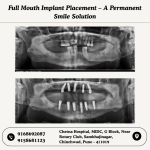Blepharitis is a common and often chronic condition that affects the eyelids, leading to inflammation and discomfort. It can cause various symptoms and is associated with several underlying causes, making it essential to understand its nature for effective management.
Symptoms of Blepharitis
Blepharitis presents with several characteristic symptoms, including:
- Dandruff-like Flakes on Eyelashes: Patients may notice flaky, crusty deposits resembling dandruff at the base of their eyelashes.
- Foamy or Bubbly Tears: Tears may appear frothy or bubbly, indicating irritation and inflammation of the eyelid margins.
- Sensitivity to Light: Photophobia, or sensitivity to light, is common among individuals with blepharitis.
- Watery Eyes: Excessive tearing or watery eyes can occur as a response to the irritation caused by blepharitis.
Causes of Blepharitis
Several factors can contribute to the development of blepharitis:
- Acne Rosacea: Facial skin inflammation associated with acne rosacea can extend to the eyelids, leading to blepharitis.
- Allergies: Allergic reactions to contact lens solutions, eye drops, or makeup can trigger eyelid irritation and inflammation.
- Dandruff (Seborrheic Dermatitis): Dandruff affecting the scalp can also impact the eyelids, causing inflammation and discomfort.
- Dry Eyes: Insufficient tear production or poor quality tears can lead to dry eye syndrome, predisposing individuals to bacterial infections that exacerbate blepharitis.
Treatment Options
Effective management of blepharitis typically involves a combination of lifestyle changes, home care, and medical treatments:
- Warm Compresses: Applying warm compresses to the eyes can help loosen crusts and debris, easing symptoms.
- Lid Scrubs: Gentle cleaning of the eyelid margins with prescribed lid scrubs or baby shampoo can remove excess oil and debris.
- Antibiotic Ointments or Drops: In cases where bacterial infection is present, antibiotics may be prescribed to reduce inflammation and control infection.
- Management of Underlying Conditions: Treating conditions such as acne rosacea or dandruff is essential to managing blepharitis effectively.
- Artificial Tears: Using artificial tears or lubricating eye drops can help relieve dry eye symptoms and improve tear film stability.
Dr. Rachana Tiwari, Ophthalmologist
Dr. Rachana Tiwari specializes in the diagnosis and treatment of blepharitis at her practice. With a focus on comprehensive eye care, Dr. Tiwari provides personalized treatment plans to alleviate symptoms and improve eye health for her patients.
Conclusion
Blepharitis can be a persistent condition requiring ongoing management to alleviate symptoms and prevent complications. Understanding the symptoms and causes of blepharitis is crucial for early detection and effective treatment. If you experience symptoms of blepharitis, consult with an ophthalmologist like Dr. Rachana Tiwari for personalized care and guidance.













